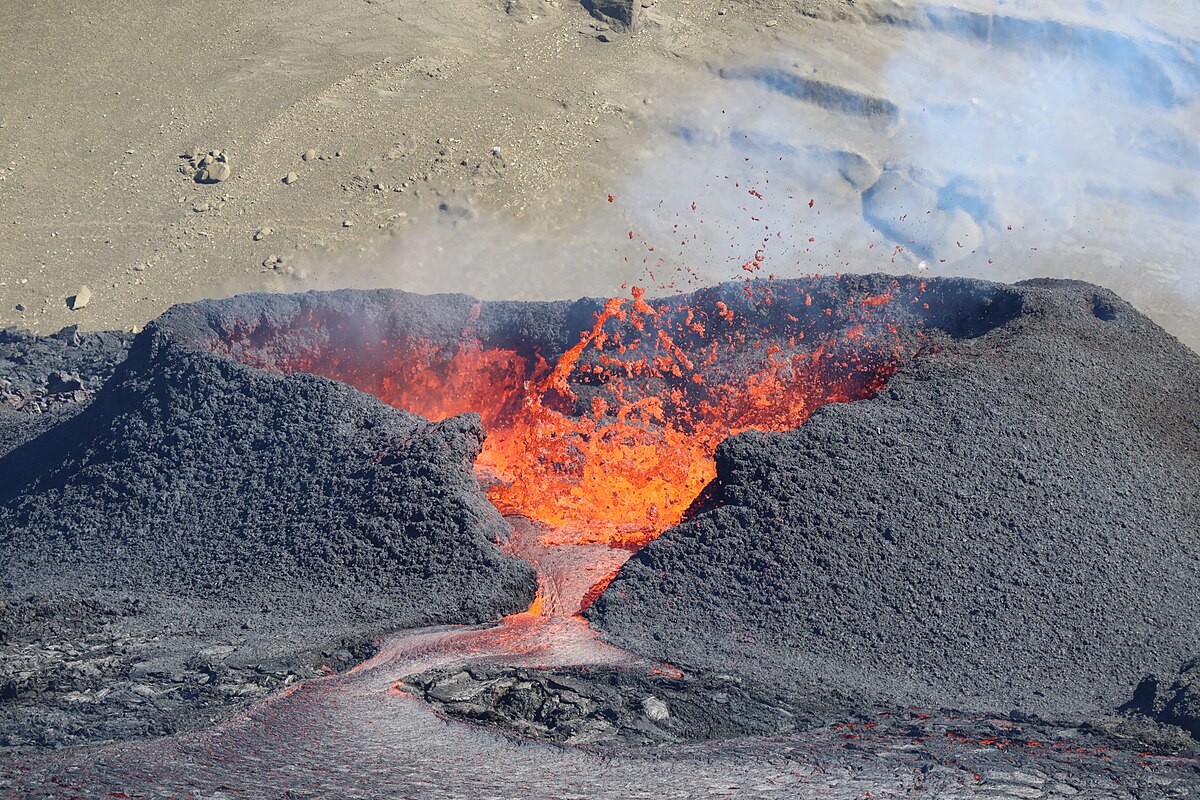
The Fagradalsfjall volcanic eruption in Iceland
Credit: Creative Commons/Yuo7si
AGU News
AGU honors journalists Brooke Jarvis, Roland Pease and Jonathan Blackwell for excellence in science journalism
AGU recognizes Brooke Jarvis 2025 Walter Sullivan Award for Excellence in Science Writing – Features for “Our Very Strange Search for ‘Sea Level’” published in The New Yorker magazine on 19 August 2024. Roland Pease and Jonathan Blackwell share the 2025 David Perlman Award for Excellence in Science Writing – News for the radio story “An armada for asteroid Apophis?”, which aired on 26 April 2024 on the BBC World Service weekly radio program Science in Action. [announcement] [all 2025 AGU honors]
Register for AGU25 in New Orleans
Join 20,000 Earth and space scientists at AGU’s annual meeting in New Orleans, 15-19 December. Session recordings will be available to online attendees on demand. Registration is free for qualified journalists and media relations professionals. [press registration]
Featured Research
Bubble trouble: how bubbles move in magma
To have lava and a volcanic eruption, you must have bubbles! Like soda in a bottle, pressure (and bubbles) starts to build up in volcanoes before eruptions. A new study looks to answer how many bubbles form, where they start and how the bubbles move as an eruption occurs. The bubble model can help scientists better understand magma and volcanic eruptions. [JGR Solid Earth study]
These spots in the Atlantic Ocean could ring alarm bells for the collapse of the AMOC
As the Atlantic Meridional Overturning Circulation slows, researchers are looking for key measurement points and locations that could provide early warning signs for the end of the current. A new model projected certain indicators, like salinity, around southern parts of the Atlantic Ocean will be the strongest early signals. The AMOC is currently being observed in three places, and the new study suggests data from SAMBA are most useful for predicting estimates for AMOC tipping times. [Geophysical Research Letters study]
Maybe that’s not liquid water on Mars after all
A “very large roll” of a radar instrument offers new insight into a highly reflective area near the Martian south pole. Along the southern tip of Mars sits a polar ice cap, and recent radar scans found strong reflections that could hint at water underneath the ice. However, for liquid to exist under the ice a very salty brine or volcanic vents would be needed to keep the water warm. [Eos research spotlight][Geophysical Research Letters study]
Key driver of extreme winds on Venus identified
A new study suggests that a once-daily atmospheric tidal cycle may be a bigger driver of rapid Venusian winds than previously thought. [Eos research spotlight][AGU Advances study]
From mantle flow to river flow: shaping Earth’s surface from within
The convection of the Earth’s mantle shapes its surface, carving fault networks into the lithosphere that can guide the course of rivers. [Eos editors’ highlight][Geophysical Research Letters study]
Rethinking engagement with frontline communities
A new perspective from community-based organizations explains how scientists, funders, and other supporters can collaborate ethically and effectively while respecting community identities and priorities. [Eos editors’ highlight][Community Science study]
Avoiding and responding to peak groundwater
A new review shows how rising demand, shrinking supplies, and policy decisions together shape when groundwater use peaks and what can be done to avoid long-term depletion. [Eos editors’ highlight][Earth’s Future study]